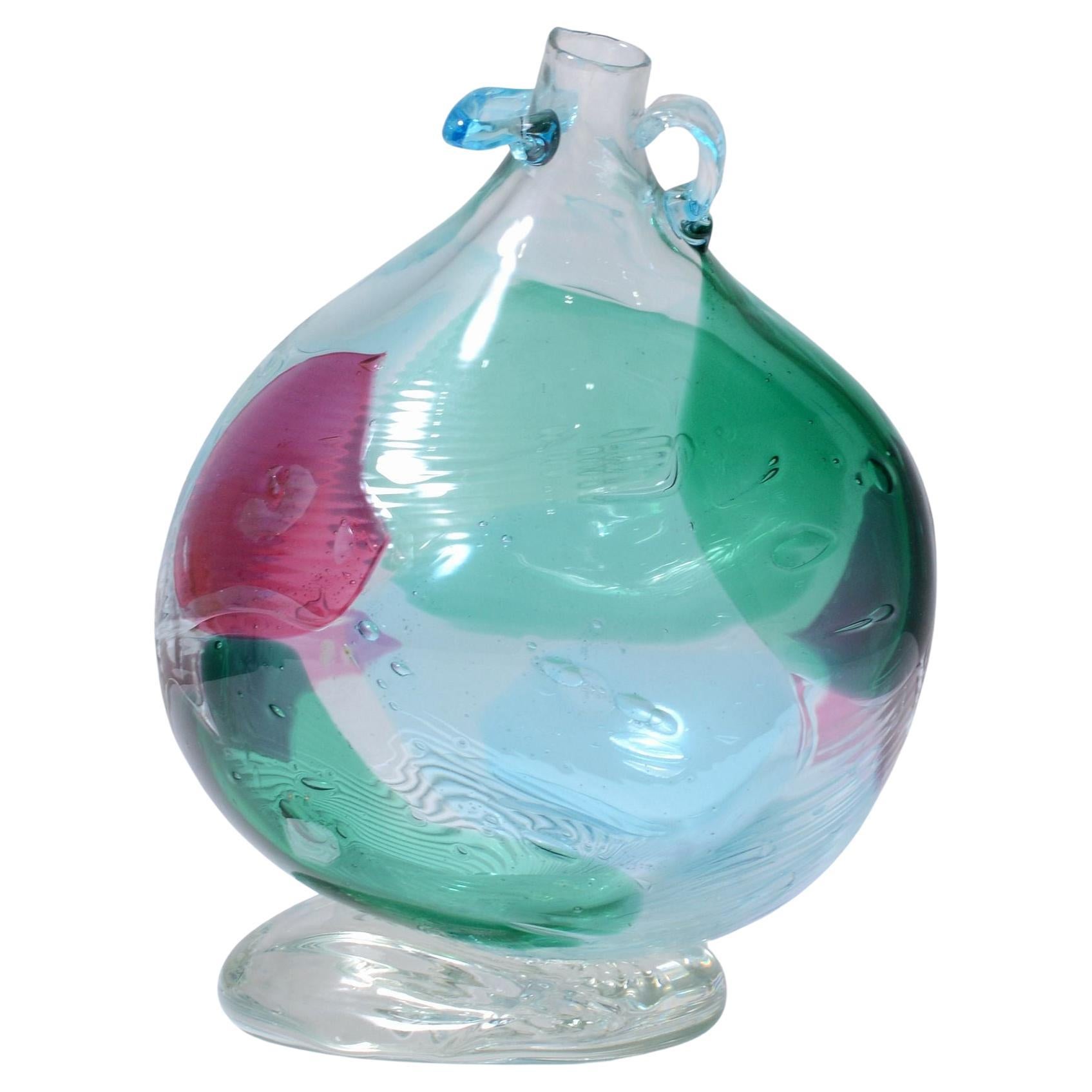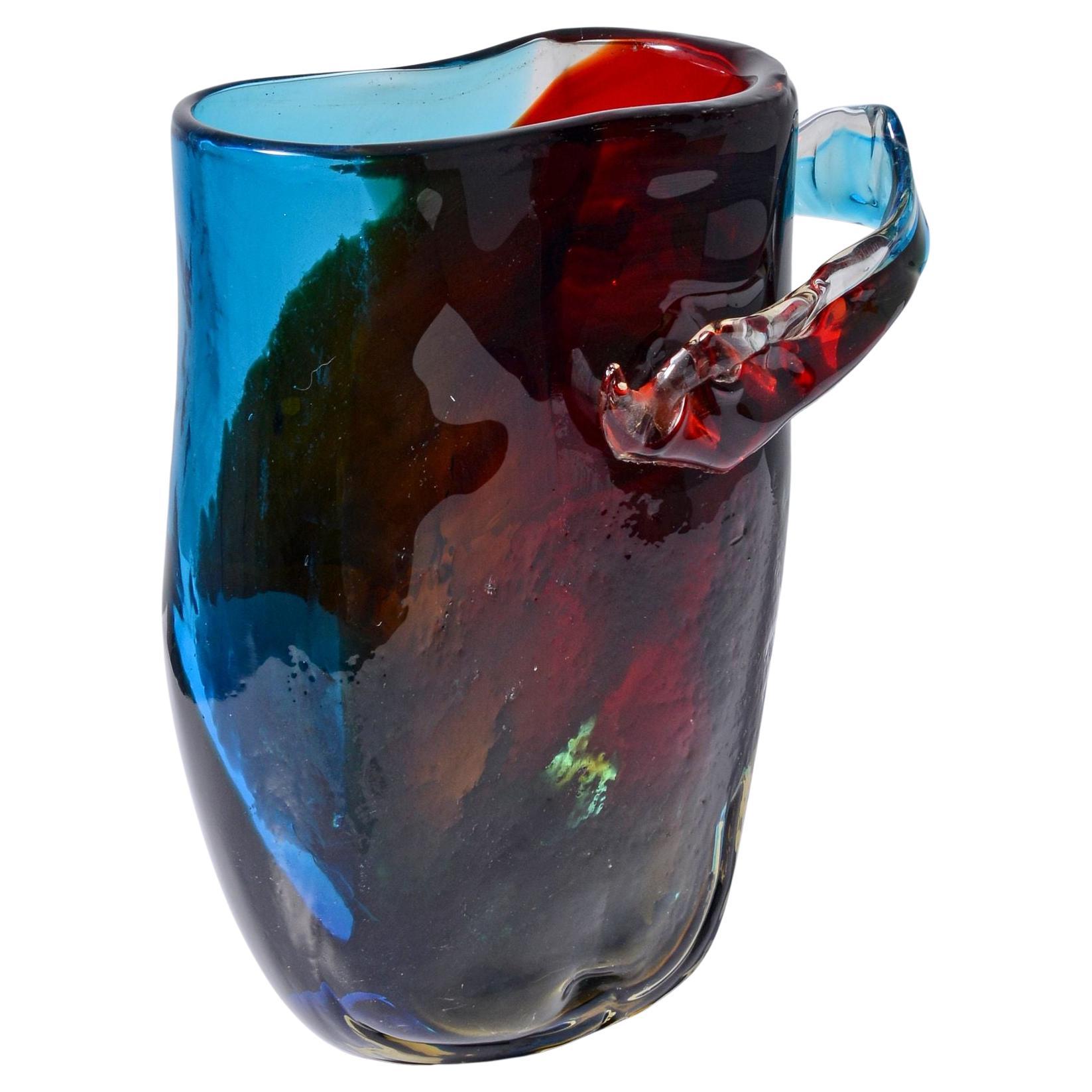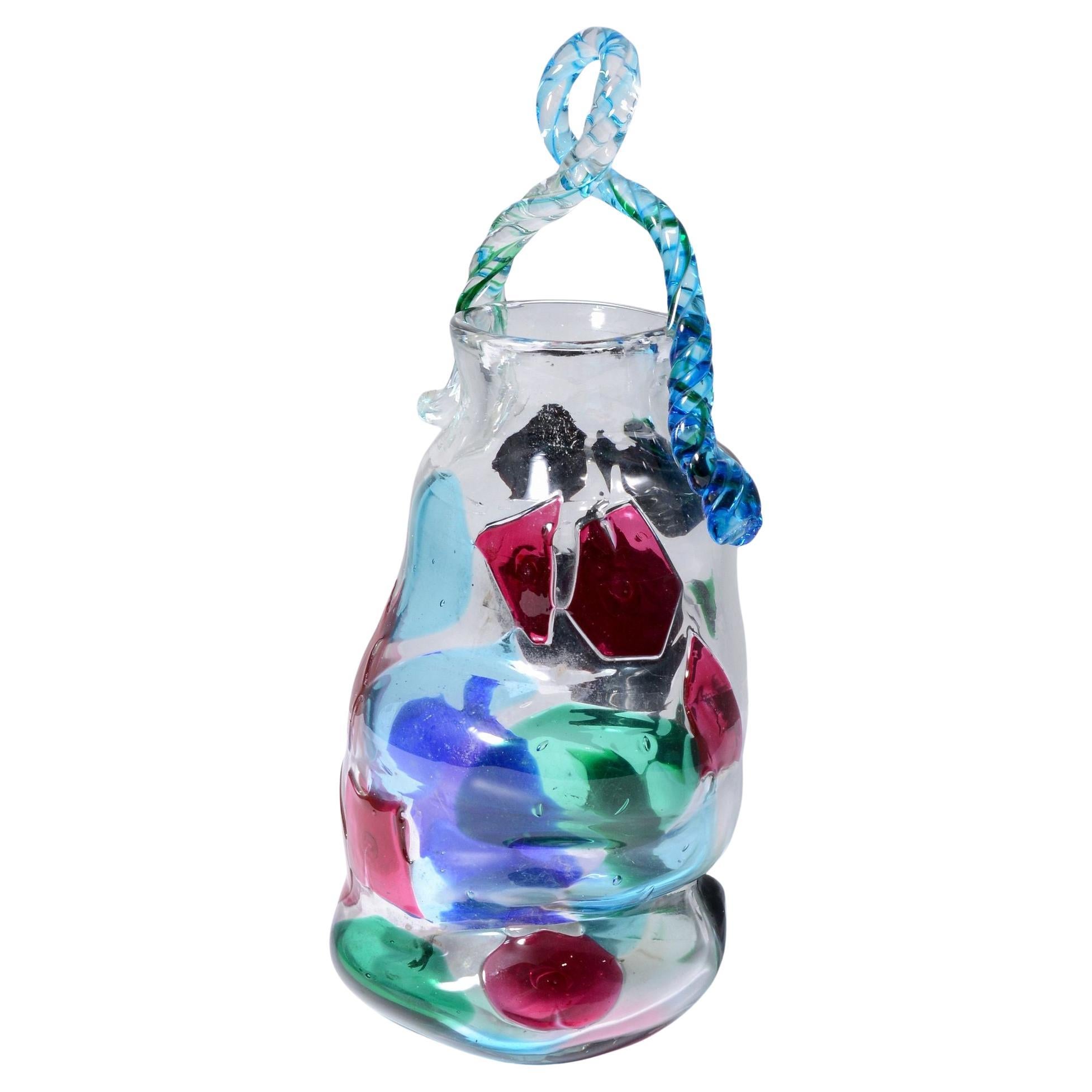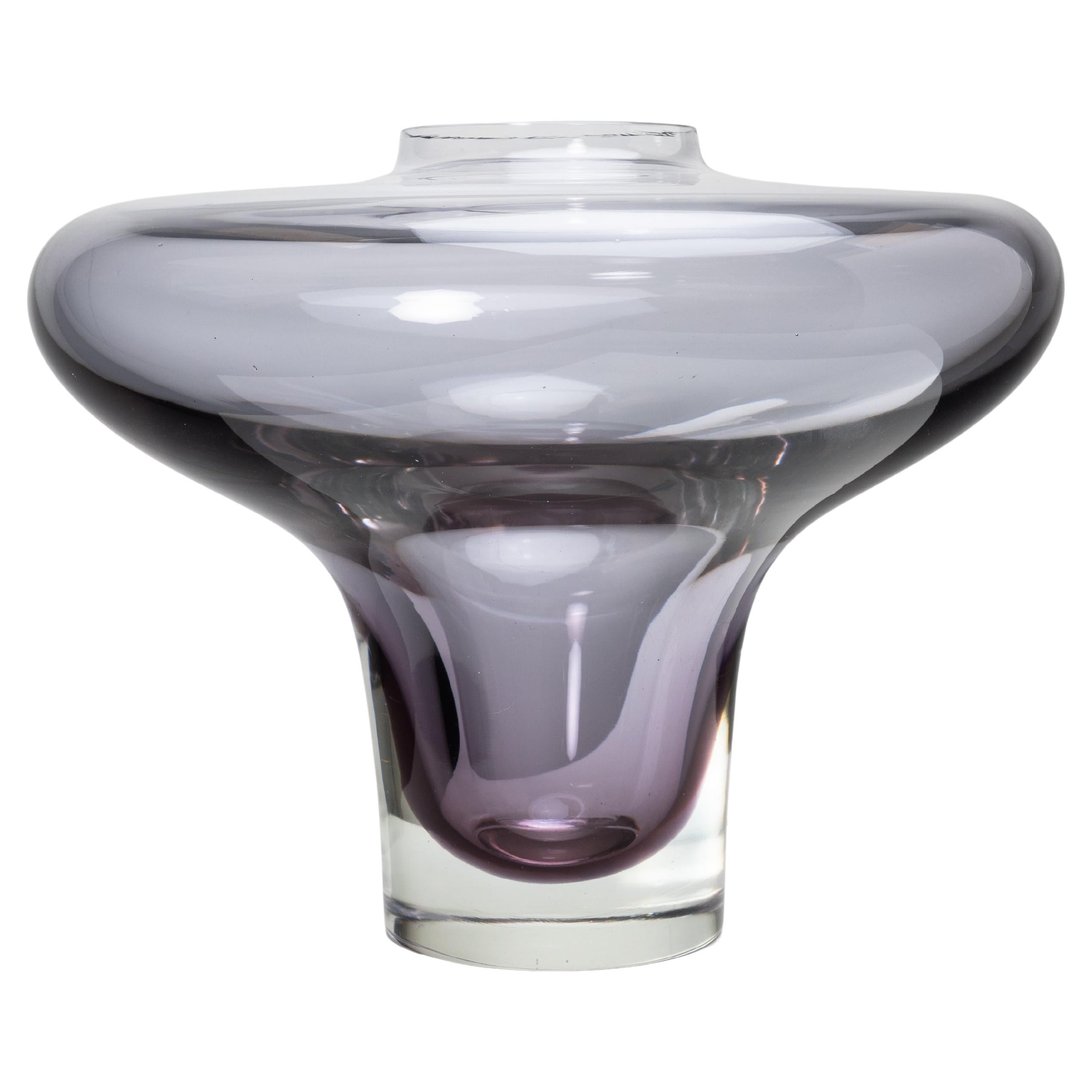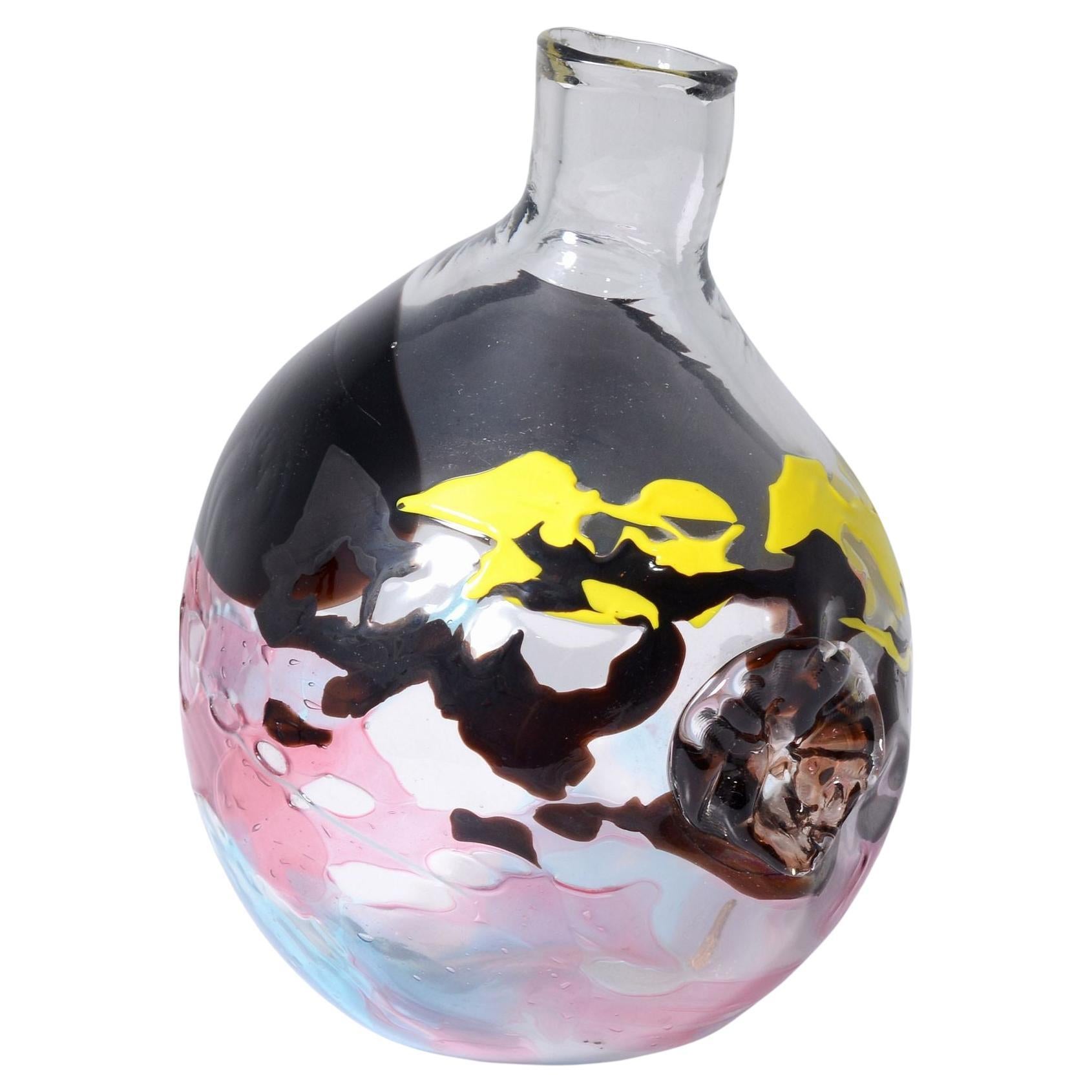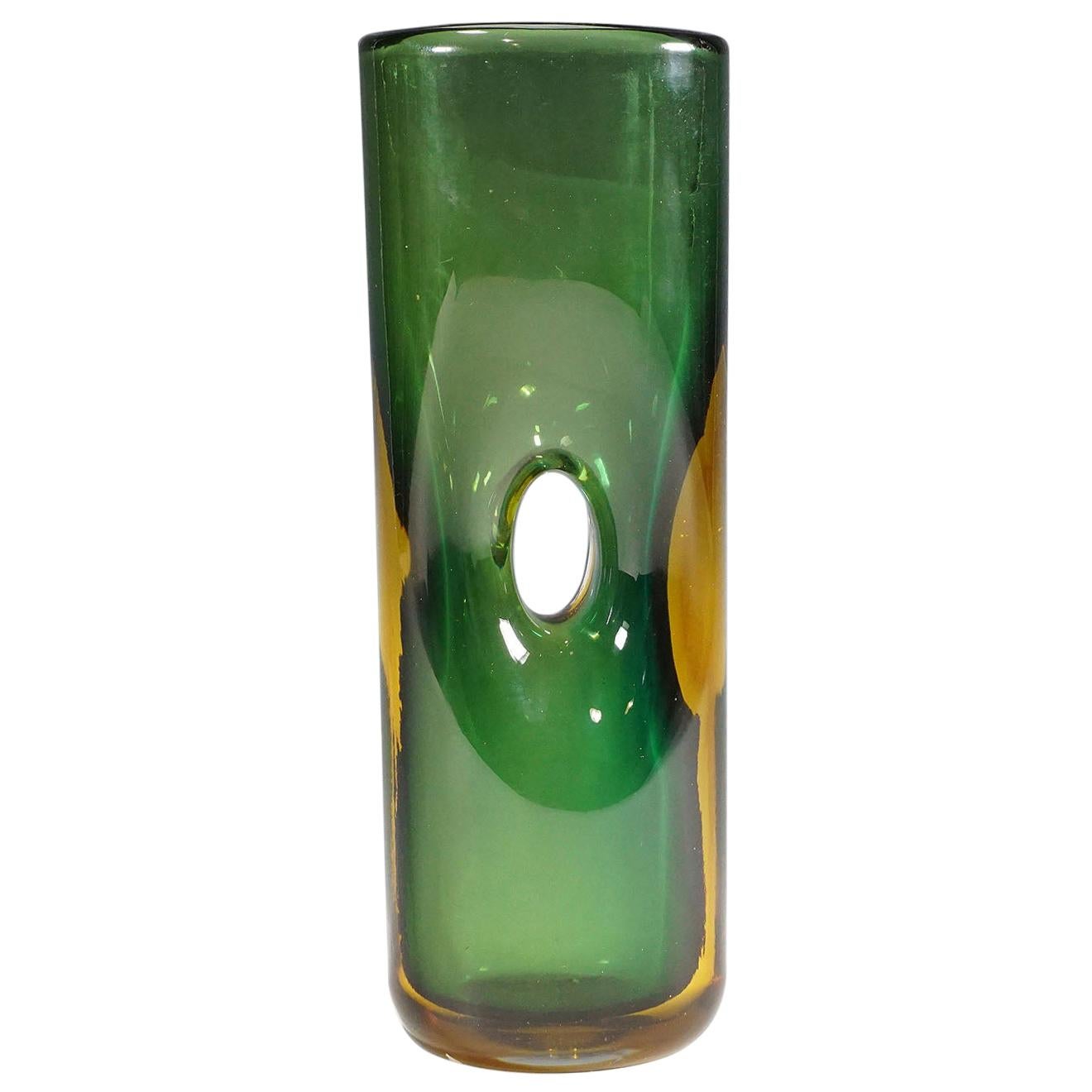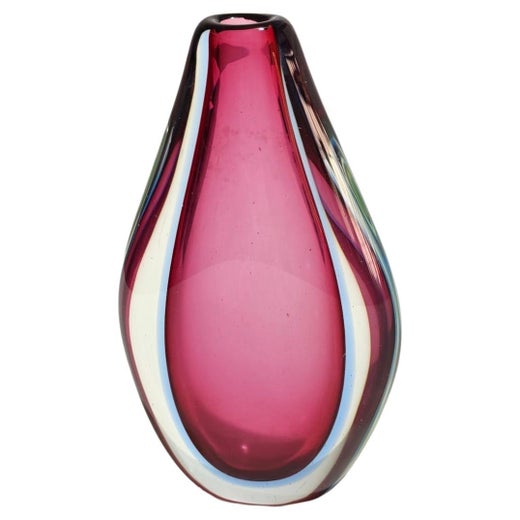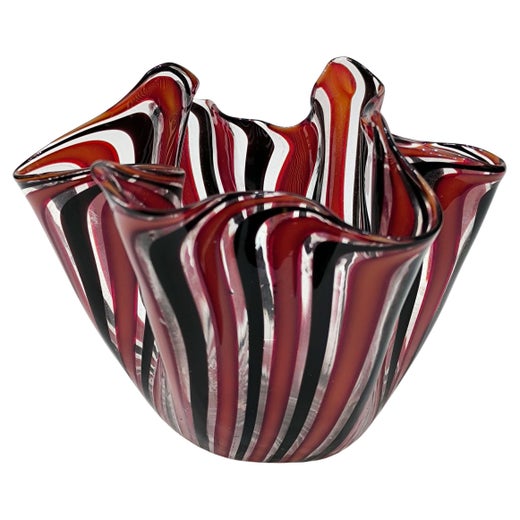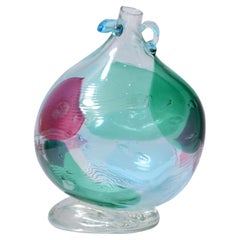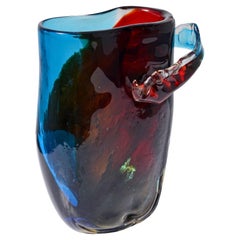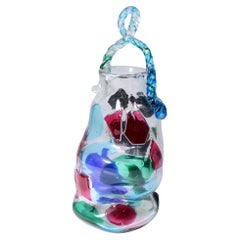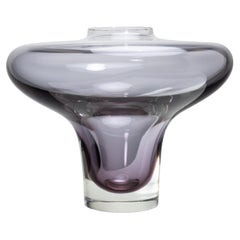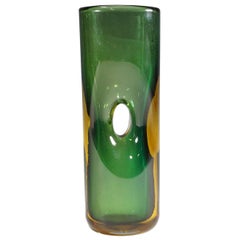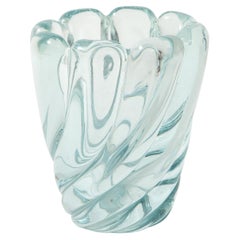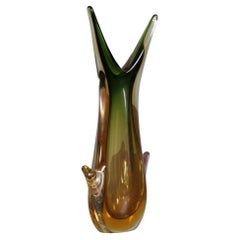Unique Fulvio Bianconi Vase, 11"H, Murano
About the Item
- Creator:Fulvio Bianconi (Artist),Seguso Vetri d'Arte (Maker)
- Dimensions:Height: 11 in (27.94 cm)Width: 7 in (17.78 cm)Depth: 6 in (15.24 cm)
- Style:Mid-Century Modern (In the Style Of)
- Materials and Techniques:
- Place of Origin:
- Period:
- Date of Manufacture:Circa 20th Century
- Condition:Wear consistent with age and use. very good, a few minor scratches to bottom, no chips or cracks.
- Seller Location:Lake Worth Beach, FL
- Reference Number:1stDibs: LU9652243476762
Seguso Vetri d'Arte
Members of the Seguso family have been leading figures in the manufacture of glass on the Venetian island of Murano since the late 1300s, but for most collectors of vintage design the name evokes two companies formed in the first half of the 20th century. Seguso Vetri d’Arte, born from a small consortium of master glass artisans that included Archimede Seguso (1909–99), thrived under the artistic directorship of Flavio Poli (1900–84), a designer with an eye for modern forms, color and pattern. Vetreria Archimede Seguso, meanwhile, was founded in 1946, when Seguso opened his own atelier in order to employ classical techniques in the making of modern glassware.
The owners of Seguso Vetri d’Arte were justly proud of their skills as craftsmen, but they were not worldly aesthetes — and they knew it. Poli had studied at the Art Institute of Venice, originally working in ceramics before switching mediums and taking up the art of glass. He introduced new simple forms to the genre — the best known of his designs being the Valva, which resembles a clamshell in profile — and employed several novel techniques such as corroso, which gives glass a rough, emery-board-like finish. Poli’s most collectible works are his sommerso pieces, made with a layering process in which clear and colored-glass vessels are “submerged” within one another, producing a kind of nesting-doll effect in striking, elegant vases with bands of separate and overlapped hues.
At his eponymous workshop, Archimede Seguso often favored highly decorative, age-old techniques employed with modern restraint. His layered-glass Losanghe vessels have the look of an abstract checkerboard while his free-form Merletto vases have delicate, lacy patterns created by painstakingly twisting two heated glass straws to create helixes around the walls of the piece.
Though different in their scope and mission, both of these furnaces bearing the Seguso name created some of the most beautiful, alluring and exquisitely crafted works in all of modern design.
Fulvio Bianconi
For a range of work that includes everything from illustrating thousands of books and other publications to his role as a visionary glassmaker, Fulvio Bianconi is remembered as one of the most innovative cross-disciplinarian artists of the postwar era.
Born in Ponte di Brenta in 1915, Bianconi showed a prodigious talent for drawing at an early age and, as a teenager, earned money as a portraitist. He also worked as an apprentice decorator in his youth at the Murano glass furnaces, where he first discovered the art of glassmaking.
In 1933, he moved to Milan to pursue a career as a graphic artist, and it was there he met Dino Villani, a painter who had ties to some of Milan’s most prestigious publishing houses and advertising firms. However, at the onset of World War II, Bianconi paused his graphic design ambitions and joined the army. In 1944, he narrowly escaped the infamous Via Rasella Nazi raids in German-occupied Rome.
Following the war, Bianconi went to work designing perfume bottles for the Milan perfume house Giviemme at Venini glassworks, where he worked with glass masters Ermete and Arturo Biassuto. Bianconi became one of Venini’s most influential glass designers — and was appointed artistic director following Carlo Scarpa — known for his bold use of color, modern style and unique, playful designs.
Among Bianconi's most iconic works in glass are the series of glass figures from the Commedia dell’Arte, his remarkably fluid bowls, and the patchwork “Pezzato” technique — his colorful vases created with this technique feature patterns that resemble those of a patchwork quilt. Works made in this fashion caused a sensation at the 25th Venice Biennale in 1950.
Venini co-founder Paolo Venini’s best designs are thought to be his two-color Clessidre hourglasses, produced from 1957 onward, and the Fazzoletto (“handkerchief”) vase, designed with Bianconi in 1949.
Bianconi worked with several other glass studios, including Cenedese in 1954 and Vistosi in 1963, creating decorative vessels, bowls, hourglasses and sculptures. He was also a graphic designer with the Italian publishing house Garzanti for nearly 30 years. Bianconi’s portfolio of graphic design included work for FIAT, Pathé and Pirelli, among others.
Bianconi’s glassworks are held in museum collections worldwide, including London’s Victoria and Albert Museum, the Museum of Modern Art and the Corning Museum of Glass in New York. The artist died in 1996.
On 1stDibs, discover a range of vintage Fulvio Bianconi decorative objects, glassware and lighting.
- ShippingRetrieving quote...Shipping from: Lake Worth Beach, FL
- Return Policy
More From This Seller
View AllLate 20th Century Italian Mid-Century Modern Vases
Blown Glass
Late 20th Century Italian Mid-Century Modern Vases
Blown Glass
Late 20th Century Italian Mid-Century Modern Vases
Blown Glass
Late 20th Century Italian Mid-Century Modern Vases
Blown Glass
Late 20th Century Italian Mid-Century Modern Vases
Blown Glass
Late 20th Century Italian Mid-Century Modern Vases
Blown Glass
You May Also Like
Mid-20th Century Italian Mid-Century Modern Vases
Blown Glass
Mid-20th Century Italian Mid-Century Modern Vases
Art Glass
Vintage 1940s Italian Mid-Century Modern Vases
Art Glass, Blown Glass, Murano Glass
Vintage 1960s Italian Mid-Century Modern Vases
Murano Glass
Mid-20th Century Italian Mid-Century Modern Vases
Blown Glass
Vintage 1980s Italian Mid-Century Modern Vases
Art Glass
